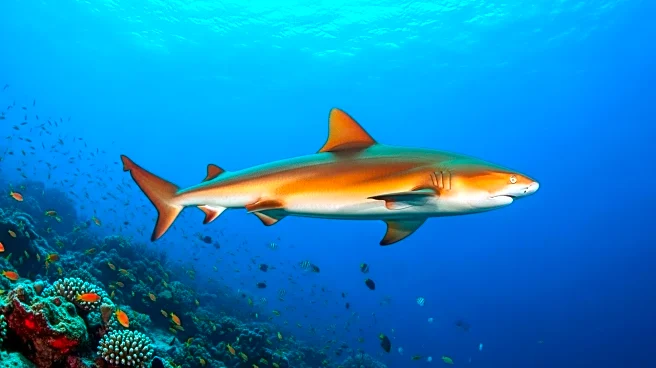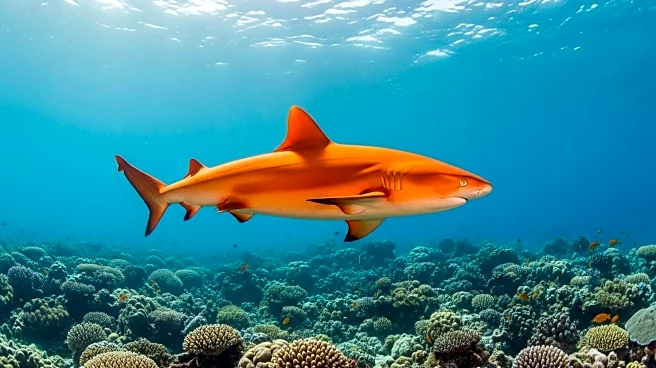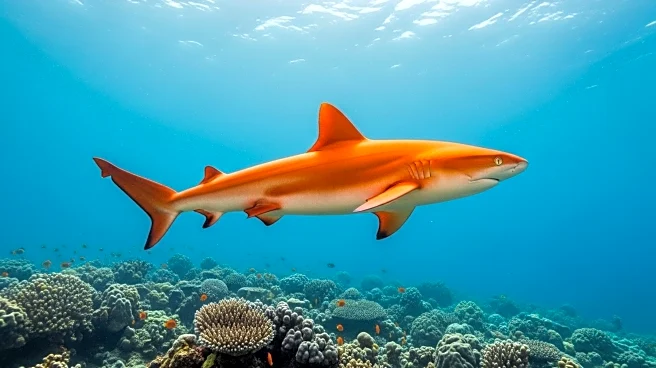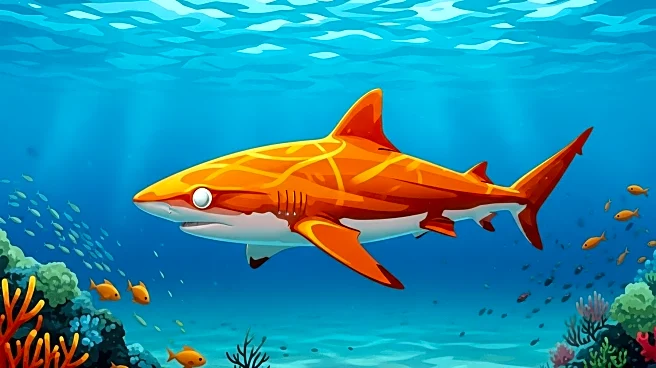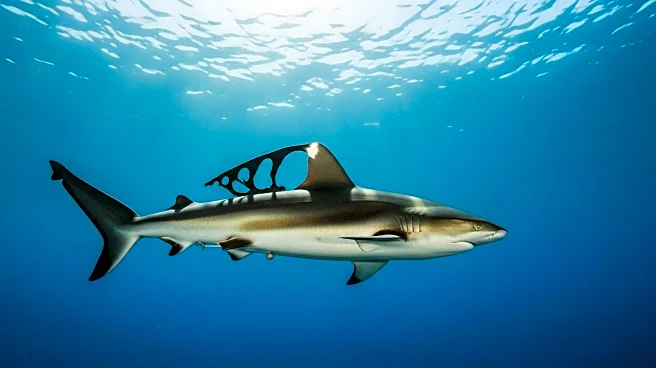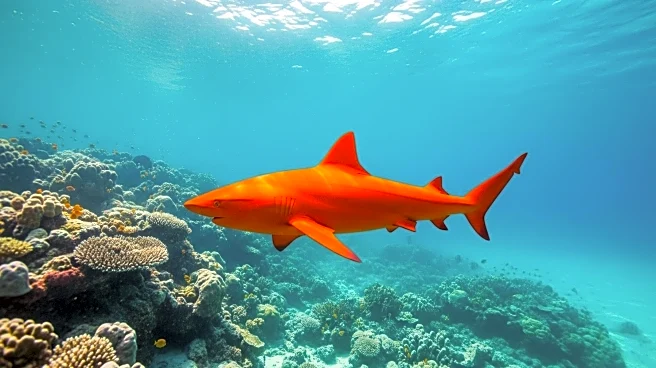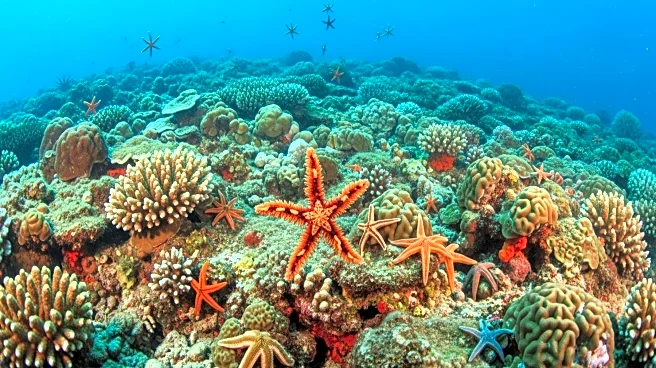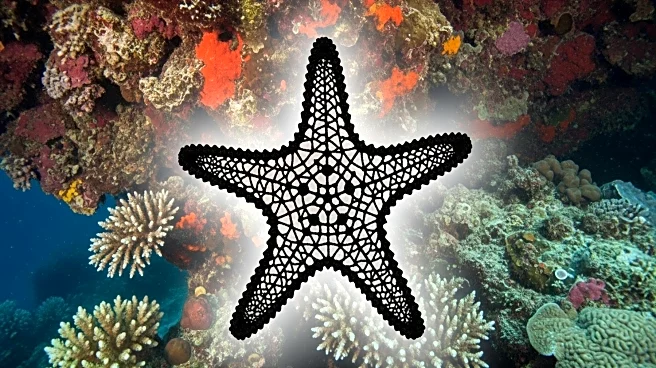What's Happening?
Garvin Watson, a fisherman in Costa Rica, caught a rare orange nurse shark, marking the first scientifically documented case of xanthism in the species. The shark, measuring 6 feet 6 inches, displayed a bright orange body and white eyes, lacking visible irises. This unique pigmentation is attributed to xanthism, a condition causing yellow or golden tones in animals. The discovery was made in Tortuguero National Park and has been recorded in the Marine Biodiversity journal. The event has captured the attention of scientists and the public, with Watson describing the shark as resembling an alien due to its unusual appearance.
Why It's Important?
The capture of the orange nurse shark is a notable event in marine research, offering new insights into genetic conditions affecting marine species. Xanthism, while rare, provides a unique opportunity to study pigmentation disorders and their ecological implications. This discovery enhances the understanding of genetic diversity in marine life, potentially influencing conservation strategies. It underscores the importance of preserving marine habitats, as they harbor unique and unexplored biodiversity. The event also highlights the role of local fishermen in contributing to scientific discoveries, bridging the gap between traditional practices and modern research.
What's Next?
Following the discovery, scientists may conduct further research to explore the genetic basis of xanthism and its occurrence in other marine species. Conservationists might leverage this case to advocate for enhanced protection of marine ecosystems, ensuring the survival of species with genetic anomalies. The scientific community could initiate studies to assess the impact of such pigmentation on the shark's behavior and ecological interactions. Additionally, there may be increased interest in exploring other regions for similar genetic phenomena, expanding the scope of marine biodiversity research.
Beyond the Headlines
The discovery of the orange nurse shark may prompt discussions on the ethical implications of genetic research and conservation. It raises questions about the balance between natural processes and human intervention in preserving biodiversity. The event could also influence cultural perceptions of marine life, highlighting the beauty and complexity of genetic anomalies. Furthermore, it may inspire educational initiatives to raise awareness about the importance of marine conservation and the role of genetic diversity in ecosystem health.
